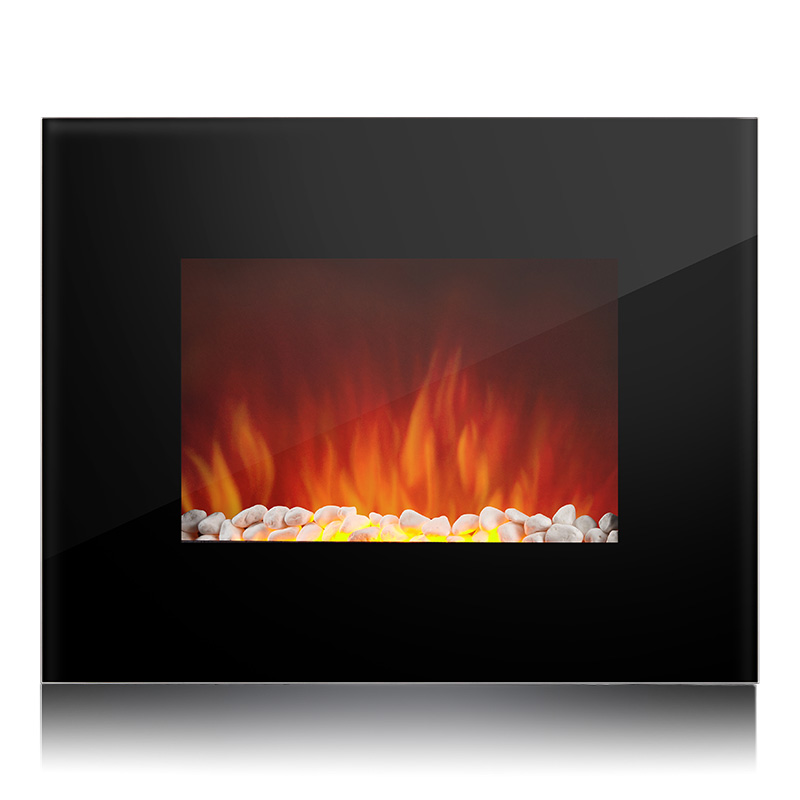The efficiency of a wall-mounted fireplace heater can vary depending on factors such as its design, heating technology, and insulation. Here are some points to consider when evaluating heating efficiency:
BTU Output: The BTU rating serves as a fundamental measure of a heater's heating capacity, indicating how much heat it can generate within a given time frame. It's imperative to match the BTU output of the fireplace heater with the heating requirements of the room. However, simply opting for the highest BTU rating available may not always result in optimal efficiency. Factors such as insulation quality, room size, ceiling height, and climate must also be considered. Oversized heaters can lead to short cycling, where the heater turns on and off frequently, reducing efficiency and potentially causing uneven heating. Conversely, an undersized heater may struggle to maintain desired temperatures, leading to overuse and decreased efficiency.
Energy Source: Understanding the energy source of the fireplace heater is crucial for assessing its efficiency and environmental impact. Electric fireplace heaters are known for their high efficiency, as they convert nearly all the energy they consume into heat. Electric models do not produce emissions during operation, making them environmentally friendly options. Gas-powered fireplace heaters, while still efficient, require proper ventilation to ensure safe operation. Modern gas fireplace technologies, such as direct vent systems and catalytic converters, have significantly improved efficiency and reduced emissions. However, it's essential to consider the availability and cost of the chosen energy source, as well as any associated installation or maintenance requirements.
Thermostat Control: Fireplace heaters equipped with thermostats offer advanced temperature control capabilities, contributing to improved efficiency and comfort. By setting a desired temperature, users can ensure that the heater operates only when necessary, reducing energy consumption and minimizing wastage. Thermostat-controlled heaters can also cycle on and off automatically to maintain consistent temperatures, preventing overheating and conserving energy. some models feature programmable thermostats that allow users to create customized heating schedules based on their daily routines, further optimizing efficiency and reducing energy costs over time.
Insulation and Sealing: Proper insulation and sealing are essential for maximizing the efficiency of a wall-mounted fireplace heater. Inadequate insulation or gaps around the unit can result in heat loss, reducing the heater's effectiveness and increasing energy consumption. Insulating the wall cavity behind the fireplace and sealing any gaps or cracks around the unit can help minimize heat transfer to adjacent walls and rooms, ensuring that the heat produced by the heater remains within the intended space. Proper insulation can help maintain consistent temperatures throughout the room, reducing the need for the heater to work harder to compensate for heat loss.
Size and Placement: Selecting the right size and placement for the fireplace heater is critical for maximizing efficiency and ensuring optimal performance. A heater that is too large for the room may consume more energy than necessary, leading to inefficiency and discomfort. Conversely, an undersized heater may struggle to heat the space adequately, resulting in increased energy usage to maintain desired temperatures. When determining the appropriate size of the heater, factors such as room dimensions, ceiling height, insulation levels, climate must be taken into account. Strategically placing the heater in a central location with adequate clearance from furniture, drapes, and other objects can help ensure even heat distribution and improve efficiency.
EF-11C 26’’ Flat Face Wall Mounted Fireplace, with Stone Ember Bed






